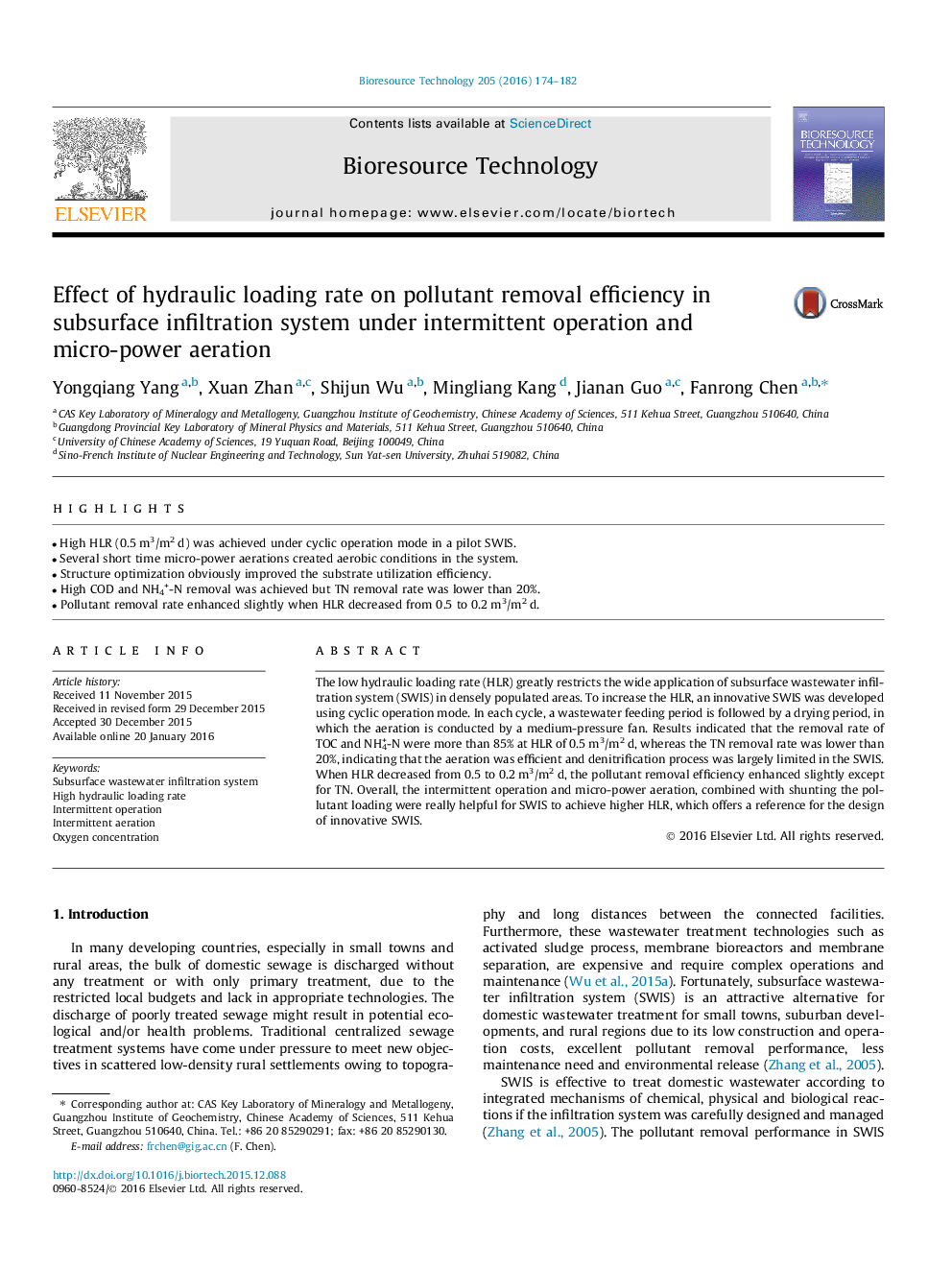| Article ID | Journal | Published Year | Pages | File Type |
|---|---|---|---|---|
| 679254 | Bioresource Technology | 2016 | 9 Pages |
•High HLR (0.5 m3/m2 d) was achieved under cyclic operation mode in a pilot SWIS.•Several short time micro-power aerations created aerobic conditions in the system.•Structure optimization obviously improved the substrate utilization efficiency.•High COD and NH4+-N removal was achieved but TN removal rate was lower than 20%.•Pollutant removal rate enhanced slightly when HLR decreased from 0.5 to 0.2 m3/m2 d.
The low hydraulic loading rate (HLR) greatly restricts the wide application of subsurface wastewater infiltration system (SWIS) in densely populated areas. To increase the HLR, an innovative SWIS was developed using cyclic operation mode. In each cycle, a wastewater feeding period is followed by a drying period, in which the aeration is conducted by a medium-pressure fan. Results indicated that the removal rate of TOC and NH4+-N were more than 85% at HLR of 0.5 m3/m2 d, whereas the TN removal rate was lower than 20%, indicating that the aeration was efficient and denitrification process was largely limited in the SWIS. When HLR decreased from 0.5 to 0.2 m3/m2 d, the pollutant removal efficiency enhanced slightly except for TN. Overall, the intermittent operation and micro-power aeration, combined with shunting the pollutant loading were really helpful for SWIS to achieve higher HLR, which offers a reference for the design of innovative SWIS.
